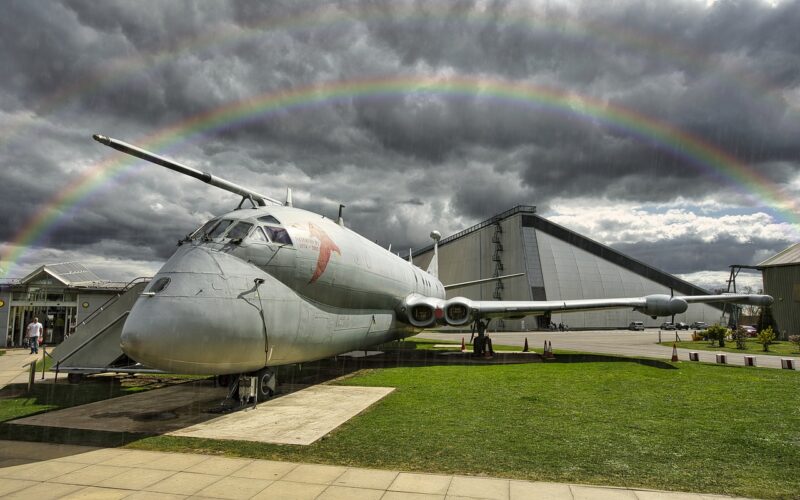How Advanced Radar Systems Are Enhancing Military Intelligence Gathering
November 16, 2024

In today’s fast-evolving battlefield, where information is power, military intelligence gathering has reached new heights thanks to technological advancements. Among these, advanced radar systems play a pivotal role in enhancing situational awareness, tracking enemy movements, and providing actionable intelligence to commanders. This article explores how modern radar technology has transformed military operations, why its capabilities are crucial, and the future of radar systems in shaping military strategy.
1. Understanding Radar Technology: A Brief Overview
Radar, an acronym for Radio Detection and Ranging, has been a cornerstone of military operations since World War II. It uses radio waves to detect and locate objects, primarily aircraft, ships, and missiles. The basic principle involves sending out waves that bounce back when they hit an object, providing information regarding the object’s distance, speed, and direction.
Over the decades, radar technology has undergone significant advancements. Modern radar systems now utilize digital processing, which enhances their capabilities beyond basic detection and tracking.
2. Enhanced Capabilities of Advanced Radar Systems
Today’s military radar systems offer features that vastly improve their effectiveness in intelligence gathering:
- Multi-Mode Operation: Advanced radar can operate in multiple modes, including ground surveillance, air traffic control, and missile tracking, providing versatility in various combat scenarios.
- Phased Array Technology: This technology allows for rapid scanning of large areas without physically moving the radar antenna. It can track multiple targets simultaneously, which is crucial in fast-paced combat situations.
- 3D Imaging and Target Classification: Advanced systems can produce three-dimensional images of the battlefield, providing detailed information about terrain and enemy positions. This capability enhances target classification, allowing military personnel to differentiate between friend and foe.
- Automatic Threat Assessment: Modern radars come equipped with algorithms that can analyze incoming data and automatically assess potential threats, significantly speeding up decision-making processes during operations.
- Integration with Other Sensor Systems: Advanced radar technology can be integrated into wider surveillance networks, including satellite imagery and drone reconnaissance, offering a comprehensive picture of the battlefield.
These advancements contribute to a more informed military strategy, facilitating quick responses to dynamic threats.
3. Real-World Applications in Military Operations
The following are notable applications of advanced radar systems in military intelligence gathering:
a. Air Surveillance and Defense:
Advanced radar systems are integral to air defense platforms, detecting and tracking aircraft, missiles, and drones. Systems like the AN/APG-81 used in the F-35 Lightning II fighter jet not only detect incoming threats but also classify and prioritize them, ensuring swift defensive actions.
b. Ground Forces Support:
Ground-based radar units provide vital reconnaissance data to commanders. They can detect troop movements, armor, and equipment, significantly improving operational planning and execution. The Ground-Based Radar (GBR) systems bolster this intelligence by offering real-time updates.
c. Maritime Operations:
Naval forces utilize radar systems for anti-submarine warfare, ensuring the protection of maritime assets. Advanced systems can detect submarines and other submerged threats, providing essential situational awareness to naval commanders.
d. UAV Surveillance:
Unmanned Aerial Vehicles (UAVs) equipped with radar systems enhance reconnaissance capabilities by providing real-time surveillance data over vast areas. For instance, the Global Hawk UAV employs synthetic aperture radar for high-resolution imaging, facilitating detailed terrain analysis and enemy positioning.
4. Challenges and Limitations of Radar Technology
Despite significant advancements, radar technology is not devoid of challenges:
- Countermeasures: Modern adversaries utilize electronic warfare tactics to disrupt radar systems, including jamming and deception, posing ongoing threats to military effectiveness.
- Cost of Advanced Systems: Developing and deploying advanced radar systems can involve substantial financial investments, which may strain budgets, especially for smaller nations.
- Environmental Limitations: Various environmental factors, such as terrain and weather conditions (rain, snow), can affect radar performance and accuracy.
Addressing these challenges requires continuous innovation and adaptation in radar technologies and warfare strategies.
5. Future Trends in Radar Technology
The future of military radar systems is set for further enhancements:
- Machine Learning Integration: Incorporating machine learning algorithms will help radar systems improve their threat detection capabilities, learning from historical data to identify patterns and anomalies effectively.
- Miniaturization: Future radar systems are likely to become smaller and more portable, enabling their use in diverse operational environments, including remote and austere locations.
- Enhanced Cognitive Radar: This concept involves radar systems that can adapt their transmission characteristics based on environmental conditions and target behavior, improving detection accuracy in complex scenarios.
Innovations in radar technology will be pivotal in maintaining military superiority and enhancing overall operational effectiveness.
Conclusion
Advanced radar systems have revolutionized military intelligence gathering, providing critical capabilities that drive informed decision-making on the battlefield. Despite facing challenges, the integration of new technologies holds immense potential to further enhance their effectiveness in military operations. As nations continue to invest in and develop radar systems, the balance of power in military intelligence will increasingly hinge on this technology, shaping the future of warfare.
By understanding and leveraging advanced radar capabilities, military forces can respond more efficiently to threats, ensuring their operational readiness in an increasingly complex battlefield environment. Stay tuned as we navigate through the evolving landscape of military technology propelled by radar advancements.







